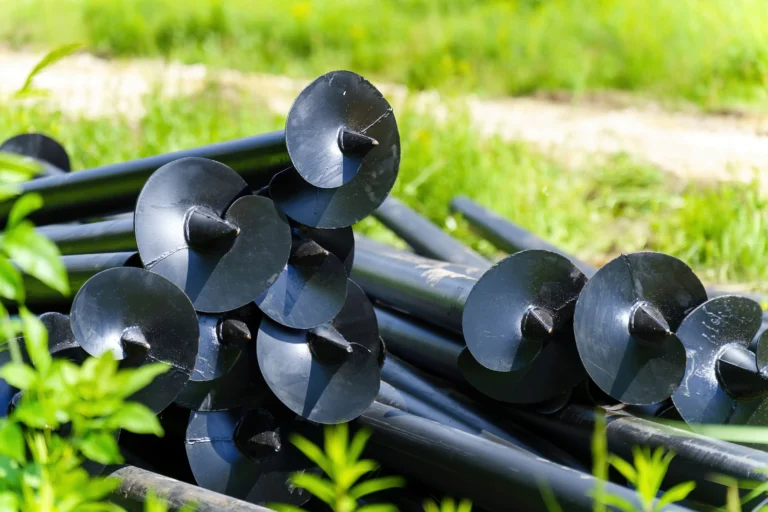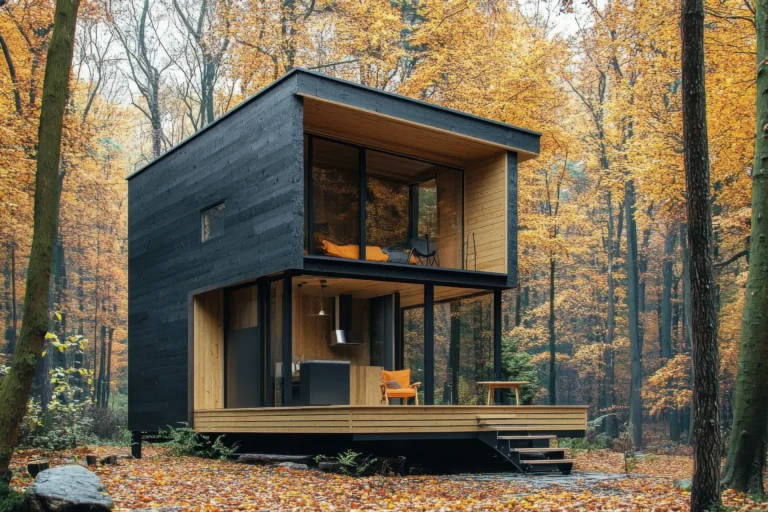For a while now, modular homes have been gaining serious popularity, and it’s not hard to see why. Built indoors in a controlled environment, they avoid weather constraints, reduce waste, and deliver consistent, superior quality construction. Once completed, the home is transported directly to the final location, ready for installation.
However, upon their arrival, there is only one element that can bring the project to an end: The foundation! That’s the step that locks your home to the land and gets the ball rolling.
Especially for modular homes, when it comes to choosing the right type of foundation, helical piles make way more sense.
- In this article, we explore why helical piles are so well-suited to modular construction, how they work, and their advantages over traditional foundations. Are you ready to learn more?
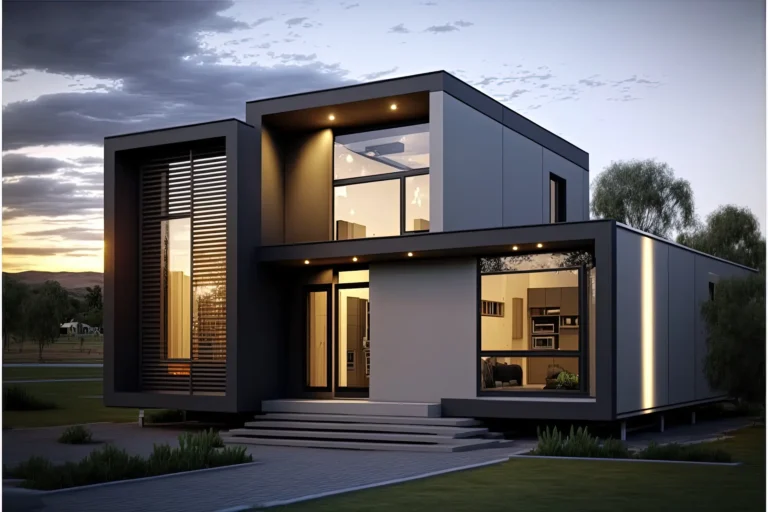
What are helical piles?
Helical piles are long steel piles with helical (spiral-shaped) blades at the bottom, kind of like giant screws for your foundation. They’re drilled deep into the ground using specialized machinery until they reach stable soil.
Once in place, they provide a solid, stable base that supports all types of structures, including modular homes.
One of the biggest advantages of this type of foundation is speed. Compared to traditional concrete foundations, which take days or even weeks to pour and cure, helical piles are installed up to ten times faster. In many cases, the installation is done in just one day, and your home is placed right after.
Quick, clean, and incredibly strong, helical piles are changing the way we think about foundations.
Do you want to learn more about helical piles? Feel free to reach out to us! Within hours, our team will connect you with an experienced installer who’s happily waiting to answer all your questions.
What are the different types of modular home foundations commonly built?
When it comes to setting your modular home on a solid base, there are a few common foundation options to consider.
Here are the most popular types:
- Helical piles: Screwed into the ground, they offer fast installation, minimal site disruption, and excellent stability, which is perfect for uneven or challenging terrain.
- Concrete slab: A large, flat, poured concrete surface that acts as both foundation and floor. It’s durable and low maintenance, but requires more time to build.
- Concrete blocks: These stacked blocks create a crawl space or basement foundation. They offer good insulation and access to utilities but involve more labor.
To make sure your modular home stays exactly where it’s supposed to be, choosing the right foundation is key.

Why choose helical piles for modular homes over other foundation systems?
The main reason helical piles are often selected for modular homes lies in how well they fit the unique nature of this construction method. Since modular homes are built off-site and then transported, their foundations need to be precise, reliable, and ready to support installation without delay.
- Helical piles are designed to be installed quickly and with great accuracy.
- It’s allowing builders to coordinate the foundation work closely with the arrival of the modules.
- They also work well in locations where traditional foundations might be difficult, such as uneven terrain or soil with poor bearing capacity.
Because they don’t require extensive excavation or curing time, helical piles align perfectly with the modular home’s streamlined factory-built process.
Most of the time, helical piles emerge as the obvious and practical foundation.
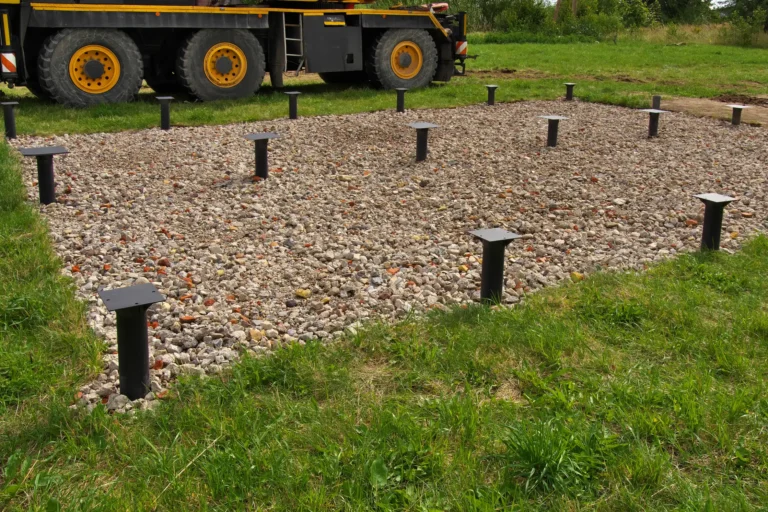
What are the advantages of using helical piles for modular or manufactured homes?
Helical piles bring a range of perks that perfectly match the characteristics and needs of modular homes. Why? Because their design and installation process offer practical solutions to common foundation challenges.
As an increasingly popular choice, here are some of the main advantages:
- Rapid installation (a few hours)
- Damaged-free installation
- Stable structure for years
- Perfectly level base
- No waiting required
- Maintenance-free
- Certified and guaranteed technology
With all these benefits combined, it’s no surprise that more and more builders and homeowners are turning to helical piles for modular home foundations. Their ability to simplify the installation process is just unbeatable.
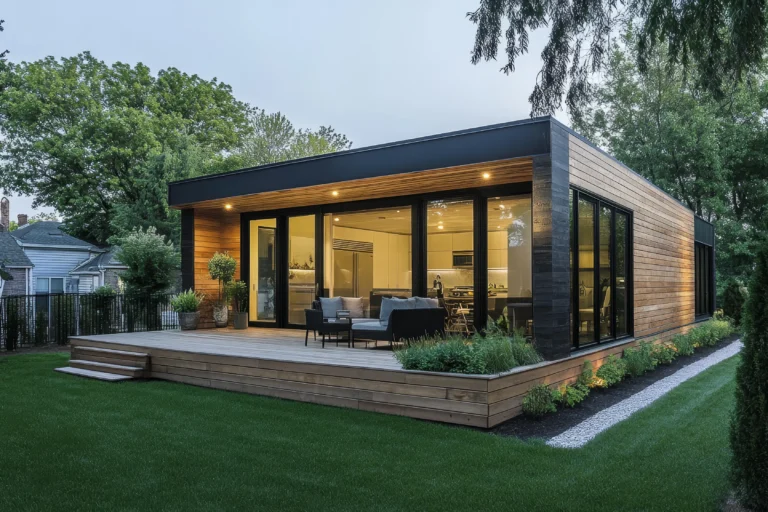
How many screw piles need to be installed for a modular home foundation?
Since every project is different, the number of screw piles required for a modular home varies quite a bit. However, it is safe to say that on average, most modular home foundations need somewhere between 18 and 36 helical piles.
When calculating the number of piles required, several factors come into play.
- Size and weight of the home
- Materials used and building components
- Soil conditions on your property
For example, a smaller, lighter home on solid ground needs fewer piles, while a larger structure or softer soil requires more to ensure proper support.
That is why a site assessment by a qualified installer is so important. They evaluate the ground and the structure’s needs to determine the exact number of piles required. That step ensures your home rests on a stable and secure foundation from day one.
How deep do helical piles go in the ground to support a modular home?
Helical piles are designed to go deep enough into the ground to reach stable, load-bearing soil. In Canada, for most modular homes, that means a depth of around 7 to 10 feet.
However, the exact depth fluctuates depending on the type of soil on your property. In areas with soft or loose ground, the piles need to be driven deeper to ensure a solid anchor.
All in all, the goal is to always reach a point where the pile is safely and securely supporting the weight of your home without shifting or settling over time. Installers use specialized equipment to measure resistance during installation, making sure each pile is placed at the right depth for maximum stability.
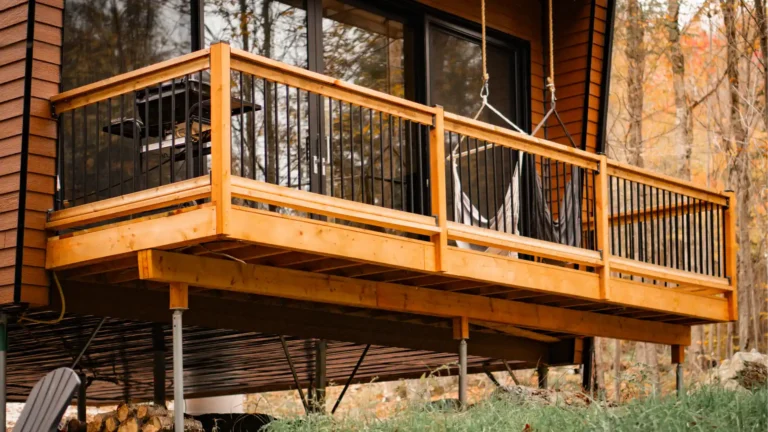
What is the life expectancy of piles for modular homes?
When properly installed and made with high-quality, galvanized steel, these piles have impressive durability. They last anywhere between 75 to 150 years.
That means once your modular home is in place, you won’t have to worry about the foundation shifting or weakening any time soon, possibly not even in your lifetime!
- This long lifespan comes from the corrosion-resistant coating that protects the steel over time.
- Installed deep enough to stay stable, they are far from surface moisture and weather changes.
- As long as the installation is done by a qualified professional and the right pile type is selected for your soil conditions.
As a long-term investment, piles are built to last and keep your modular home firmly in place for generations.
What kind of warranty is offered with the installation of helical piles for modular homes?
Knowing your foundation is protected offers real peace of mind, especially when you’re investing in a modular home. Most certified helical pile installers provide long-term warranties that reflect the reliability and durability of the system.
In Canada, you often see warranties of up to 75 years, and in some cases, even a lifetime warranty,. It depends on the company and the installer you hire.
These warranties generally cover:
- Structural strength
- Corrosion resistance
- Overall performance over time
It’s important to note that to benefit from these protections, the installation must be done by a certified professional using approved, high-quality materials. If it’s not done by a certified installer, you won’t be covered, and that’s a risk you don’t want to take.
What kind of equipment is used to screw the piles?
Installing helical piles might sound like a big job, but the equipment used is surprisingly compact and efficient.
To screw the piles into the ground, professionals typically use a small machine equipped with a specialized hydraulic drive head. This tool gives the installer full control over the speed, depth, and torque, ensuring each pile is anchored properly in stable soil.
Lightweight and mobile, it means that this equipment is able to access tight spaces and is even used on properties with limited access or uneven terrain. For this type of foundation, there’s absolutely no need for large, disruptive machinery or heavy concrete mixers.
Precise, fast and surprisingly clean, the installation process keeps your land intact while giving your modular home a strong and lasting foundation. It’s a high-tech approach to what used to be a messy and time-consuming part of construction.
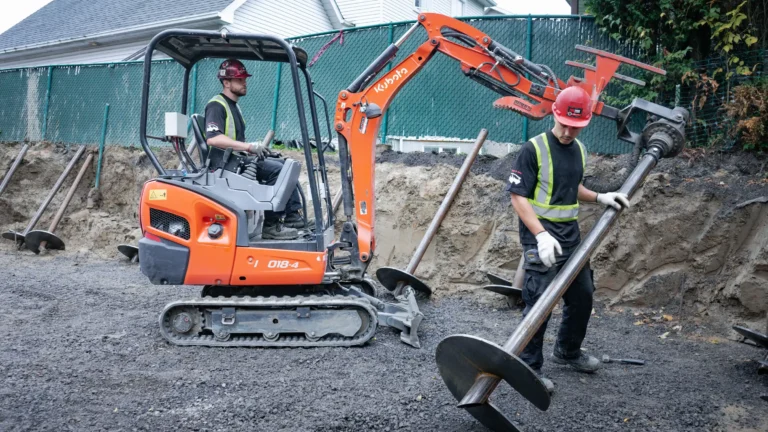
How much does it cost to install helical piles for modular homes?
The total cost of installing helical piles for a modular home is based on a series of factors. On average, expect to pay between 200$ and 600$ per pile, including installation.
For a regular modular home that requires anywhere from 18 to 36 piles, that brings the total foundation cost to roughly 3 600$ to 21 600$.
While it might seem like a big investment upfront, it’s important to remember that helical piles don’t require a lot of time to install, no maintenance at all and are made to last for a lifetime.
Needless to say that over time, helical piles are much more economical than traditional concrete foundations.
Are you looking to install helical piles for your modular or manufactured home?
Are you almost ready to break ground? Then, you must remember that helical piles are perfectly suited for modular construction. If you are considering using this type of foundation, we are here to put you in contact with the best certified installers in your area.
- To find a trusted professional who will bring your modular home project to life, just fill out our form! It’s free and there's no obligation.
Our partners are ready to guide you through the process, answer your questions, and provide competitive quotes tailored to your needs.
Your modular home foundation starts with the right expert!


